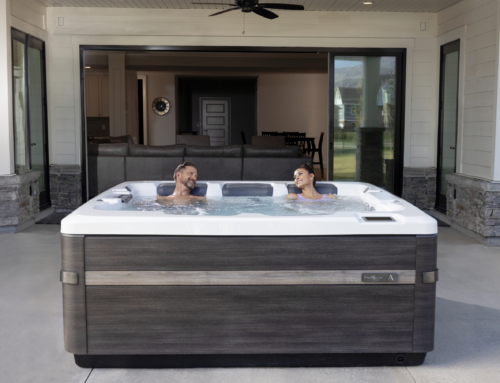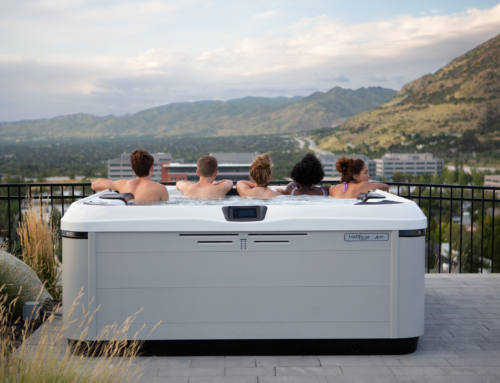How many times a day do you hear these phrases: “It’s too expensive,” “I can’t afford it,” or how about this one, “Have you got anything cheaper?” This last is by far the most frustrating to the spa salesperson because if dealers were in the business of selling cheap, they wouldn’t be in business long. The problem is that customers come to your store with expectations based on what they’ve found online or seen in big box stores. The solution lies in how you respond to these statements.
“It’s Too Expensive”
There is a difference between “it’s too expensive” and “I can’t afford it.” When customers say a product is too expensive, they are making a value judgement. It doesn’t necessarily mean they don’t have the money; instead, what they are really saying is:
- You’re charging more than they think the product is worth.
- Other places charge less so, by comparison, you’re too expensive.
- They have a specific amount they are willing to pay and isn’t what you’re charging.
What the customer really wants to know is what value they will get for the price you’re charging. Here’s how you should respond:
- First, don’t apologize for your prices.
- Acknowledge their opinion and that you realize it’s a big investment.
- Explain, in detail, the value they get for their dollars.
An appropriate and effective response is to ask them “compared to what?” Take this example response:
“I understand that a spa is a big investment, and I can assure you that our product offers advantages you won’t find in a lower-cost alternative. Let’s work together to make sure you get a quality product that best meets your needs. What, specifically, are you looking for in a spa today?”
Lacey Arant of Charleston Pool & Spa finds that many customers are comparing spa dealer prices to big box stores and “believe they can buy a 6-person hot tub for $5,000 or less.” She goes on to explain to them that they “will spend more for a better quality spa from a spa dealer.” This is also where Arant emphasizes their service department and warranty along with other value-added features such as “ABS bottom, full-foam, and better plumbing.” When you know what you’re being compared too, you can easily explain that competitor pricing is lower because they don’t offer the same value as your products.
“I Can’t Afford It”
Whereas “too expensive” indicates the price is more than the customer is willing to pay, “can’t afford” indicates the price is more money than they have to spend. When a customer says they can’t afford the product, here’s what they may be telling you:
- They have some idea of what they can spend on a spa without taxing their existing budget.
- It isn’t so much about value as it is about what they can get for the money they have to spend.
- They like you and your product, but it’s easier to say they can’t afford it than it is to say no.
Even in the last case, there is still a sale to be made here; you just have to ask the right questions:
- What kind of budget are working with?
- Why are you looking at getting a spa?
- How are you planning to use your spa?
Once you know the customer’s budget restrictions, you can offer to show them something in a lower price range and tell them about payment plans, service-as-you-go plans, free delivery, and so forth. Knowing why they want a spa and how they plan to use it will help you identify the spa that best meets their needs in a price range they can afford. One thing Arant emphasizes here is that her store offers 0% interest financing. Consider this type of response for the “can’t afford it” customer:
“I understand. A home spa is a big investment; however, we do have a few alternatives in your budget range. We can look at some options without some of the bells and whistles, and I can show you some of our affordable financing options. If you want to add some additional features down the road, we can discuss doing that when the time comes.”
On the other hand, the customer may think they can’t afford it due to lack of spa knowledge. For example, Arant says that customers are most surprised to find that “a 3-seater is not half the price of a 6-seater.” Once they realize the cost has to do with the equipment and not the size, customers may be willing to alter their budgets. In fact, Charleston Pool and Spa customers generally “want to only spend $5,000, but [Arant] sees many are willing to spend $6,000-$8,000 for a better brand hot tub that will last at least a decade.”
Whereas “too expensive” indicates the price is more than the customer is willing to pay, “can’t afford” indicates the price is more money than they have to spend.
Of course, if the customer doesn’t have a budget or is unable to give you a number, they probably aren’t ready to buy in the first place. In this instance, you should take down their information, give them your business card, and thank them for coming in. Invite them to return after they’ve had some time to consider their options.
“Have You Got Anything Cheaper”
This particular phrasing should be approached with close attention. How the customer says it is as important as the wording itself. It could just be another way of saying “it’s too expensive” or “I can’t afford it,” but it could also be a red flag of trouble down the road. Ask very specific questions in response to this statement.
- What price range were you thinking of?
- Did you have a particular price in mind?
- Other than the cost, does this model appeal to you?
- If I had something similar in your price range, would you be interested making a purchase?
- Can I show you our basic model?
If they are unwilling to state a specific budget or give a price range, they may not know what they want or how much they can spend. It may be that the real objection isn’t the cost at all and by asking the right questions and really listening to the response, you learn what the real issue is and can address it toward making a sale.
Once again, it may be that they have found cheaper products online or at a big box store and expect you to offer them the same price. This is a good time to give them a detailed side-by-side comparison of your brand and the online or big box brand. Arant responds by explaining that “our brands are high-end with better quality, latest technology, built to last, established brand, better reputation, and the brand is not going anywhere unlike many big box spa brands that go out of business. I also ask, who is going to service the spa when you have an issue? We have our own in-store service department.”
It all boils down to the quality of the product vs the quantity of money the customer wants to spend.
Unfortunately, some people just want to have the upper hand in every perceived negotiation. Others just want something for nothing, and these are the ones likely to cause headaches later on with service and maintenance issues because they bought a cheap product and got what they paid for. If it appears that no price is going to be the right price today, try this response:
“I completely understand that the cost would stretch your budget right now. A spa is a significant investment, but if the funds become available in the future, we’d love to work with you. Here’s my card. Reach out to me anytime and I’ll happily help you find the right spa for you.”
You Get What You Pay For
Arant provides these comparisons to her customers to ensure they know what they’ll get for their money:
- Dealer spas offer two pumps instead of one, guaranteeing enough power to each jet, whereas only one pump results in “weak jets that only move the water around and will do nothing for muscles and hydrotherapy.”
- Some box store/online models “are 110 volt (if plugged into the wall, it will draw a lot more energy than 220 volt)” which is standard in dealer spas.
- Dealer spas generally have stronger, 5.5 kw heaters so the spa heats up quicker thus consuming less energy.
- Box stores/online sellers offer 1-2 year warranties compared to the 3-5/7-10 year warranties offered by spa dealers.
- Most pool stores don’t like servicing big box store and online hot tubs, whereas spa dealers service their own products.
Additionally, customers often don’t take into consideration delivery, setup, and installation costs. All of these are handled by the spa dealership while box stores and online sellers may provide some or none of these. When the dealer delivers, sets up, and installs, the spa customers know it’s been done right which will save them money in service calls for a cheaper model that is incorrectly installed.
It all boils down to the quality of the product vs the quantity of money the customer wants to spend. The key is to make sure the customer understands what they are getting for the price when they buy from you rather than online or from a big box store.









I love this last comment. “I completely understand that the cost would stretch your budget right now. A spa is a significant investment, but if the funds become available in the future, we’d love to work with you. Here’s my card. Reach out to me anytime and I’ll happily help you find the right spa for you.”
Always try to stand your ground, at the best you see, yourself at the best offer, with the right service that wont put your brand down
Thank you for writing this article. Very helpful to me. I bet my 100K followers on Tiktok will also enjoy this. Will def share with them.